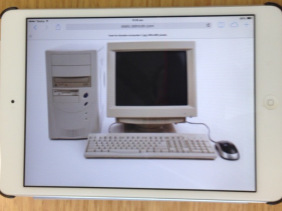I’ve recently read an article by Elizabeth Buckner and Paul Kim documenting their research on the implications of Integrating technology and pedagogy for inquiry-based learning using the Stanford Mobile Inquiry-based Learning Environment (SMILE). While this particular study examined the influence of SMILE on inquiry-based learning in developing countries, it raised several factors for consideration by any school wanting to integrate ICTs in an inquiry-based learning environment.
The Integration of ICTs and Pedagogy
Schools around the world are increasingly adopting technology into their classroom environments and boasting one-to-one or mobile device programs. While these initiatives are essential in twenty-first century learning environments, what we are yet to hear about is exactly how effective ICTs are in enhancing the learning in a classroom. Learning using ICTs incorporates more than putting these devices in a classroom or the hands of our students, it must involve an integration between pedagogy and technology by supporting the incorporation of meaningful educational content and contextualized pedagogy (Buckner & Kim, 2014, p.100). This may include for example, considering what effect placing a mobile device in the hands of every student in a classroom will have on their ability to collaborate and problem-solve. There is argument here that, without appropriate pedagogy, this would actually decrease the way dimensions mentioned in the Australian Curriculum General Capabilities, particularly the ICT Capability, are met by students in their learning.
While effectively, mobile devices broaden the learning environments and opportunities students are exposed to, as educators, we are focusing too much on the type of technology we provide, instead of the pedagogical techniques designed to utilise this technology appropriately.
Student and Teacher Training in ICTs
It may seem obvious that educators must have a strong knowledge of the technology and devices they are using with their students. However, Buckner & Kim suggest that often, this is the biggest factor in decreasing the ability of students to learn using ICTs. Educators who feel uncomfortable with the use of ICTs or are scared of losing authority and control when students use ICTs in the classroom, greatly decrease the opportunities of students to question, problem-solve and learn (2014, p.102). This factors supports the notion that schools must begin to provide greater support for staff in their use of ICTs and place greater focus on the skills they need to use their in their teaching and learning – not the programs.
ICTs and Mobile Devices role in enhancing Inquiry Learning
As educators, we are well aware of the potential of ICTs and mobile devices to increase engagement in the learning of our students, however, we must pay attention to the effect our pedagogical practices has on this. Simply providing a student with a Mobile Device to type their work instead of write does not automatically increase engagement in learning. Instead, we must consider how we can change our teaching and learning in relation to ICTs and Mobile Devices to promote, “a pedagogical shift from didactic teacher-centred to participatory student-centred learning” (Looi, Seow, Zhang, So, Chen, & Wong, 2010, p. 156). In their article, Buckner and Kim examine the use of the SMILE model to promote the questioning involved in an inquiry-based learning environment through several different case studies across many countries. The video below provides an accompanying overview of the SMILE method used in the research of Buckner & Kim.
Whether or not the SMILE method is adopted in your school, Buckner & Kim lead us to acknowledge the importance as educators, particularly those who adopt inquiry-based learning practices, to consider exactly how we are using and integrating pedagogy AND ICTs to improve teaching and learning in our classrooms.
Reference List
Buckner, E., & Kim, P. (2014). Integrating technology and pedagogy for inquiry-based learning: The stanford mobile inquiry-based learning environment (SMILE). PROSPECTS, 44(1), 99-118. doi:10.1007/s11125-013-9269-7
Looi, C. K., Seow, P., Zhang, B. H., So, H. J., Chen, W., & Wong, L. H. (2010). Leveraging mobile technology for sustainable seamless learning: A research agenda. British Journal of Educational Technology, 41(2), 154–169.

Pingback: Utilising ICTs to Enhance Inquiry | A Journey
Hello. excellent job. I did not expect this. This is a great story. Thanks! eccdekcbekdg
LikeLike
I appreciate you sharing this article.Thanks Again. Really Cool. bcedcfdbedee
LikeLike